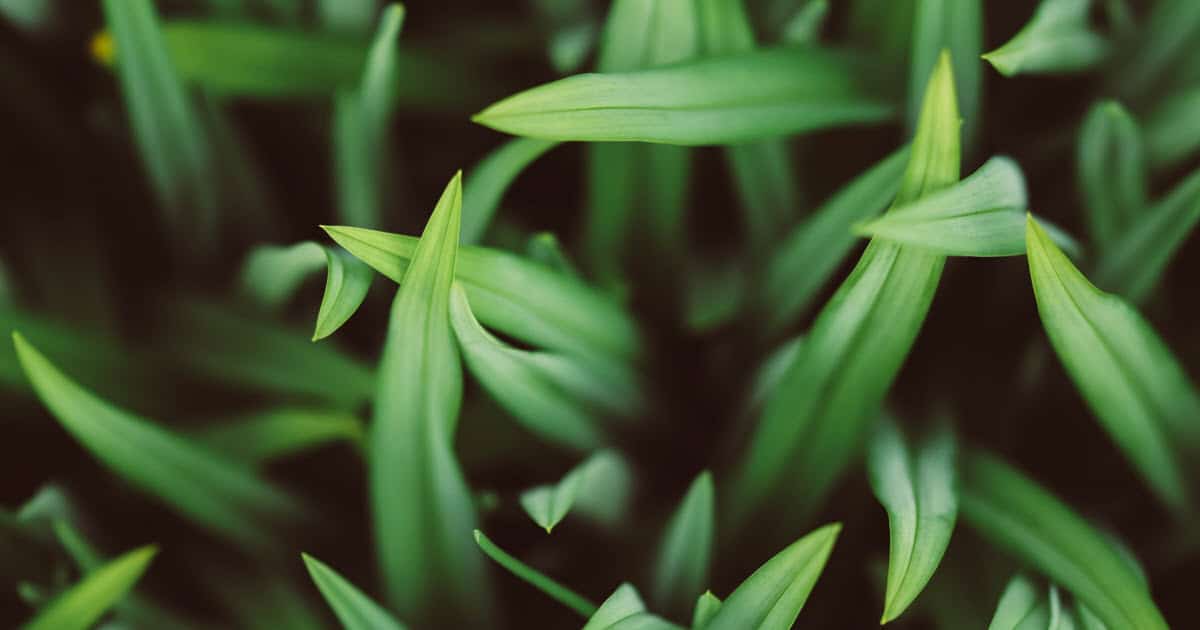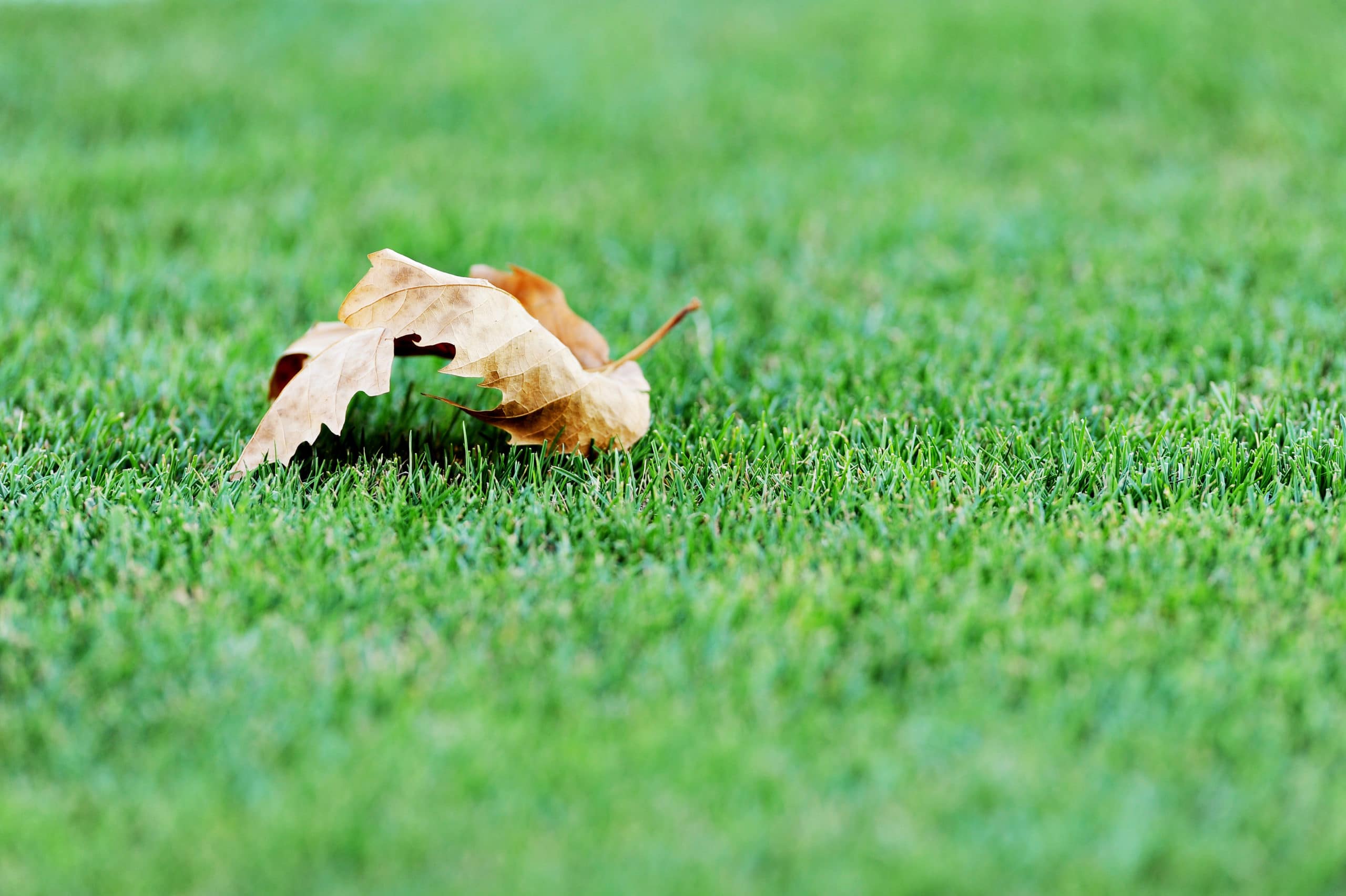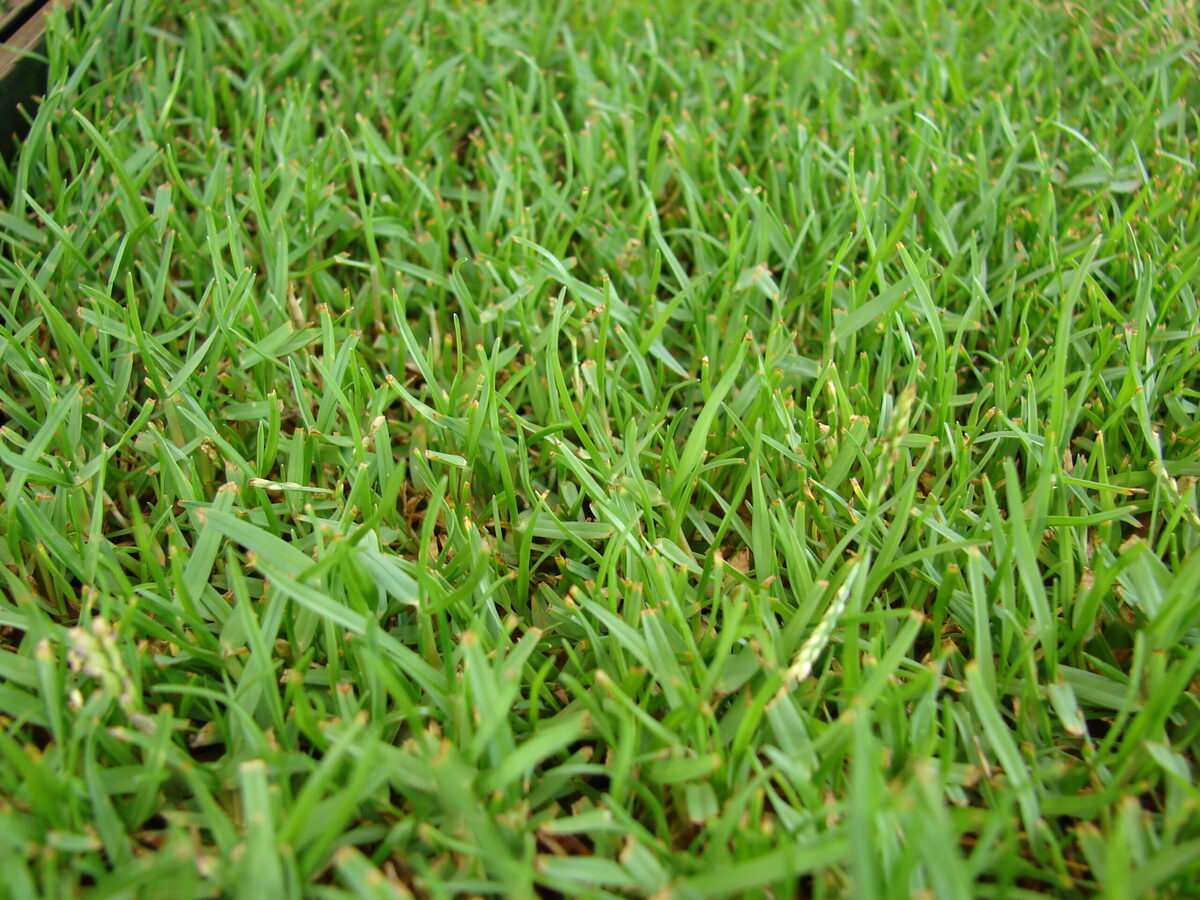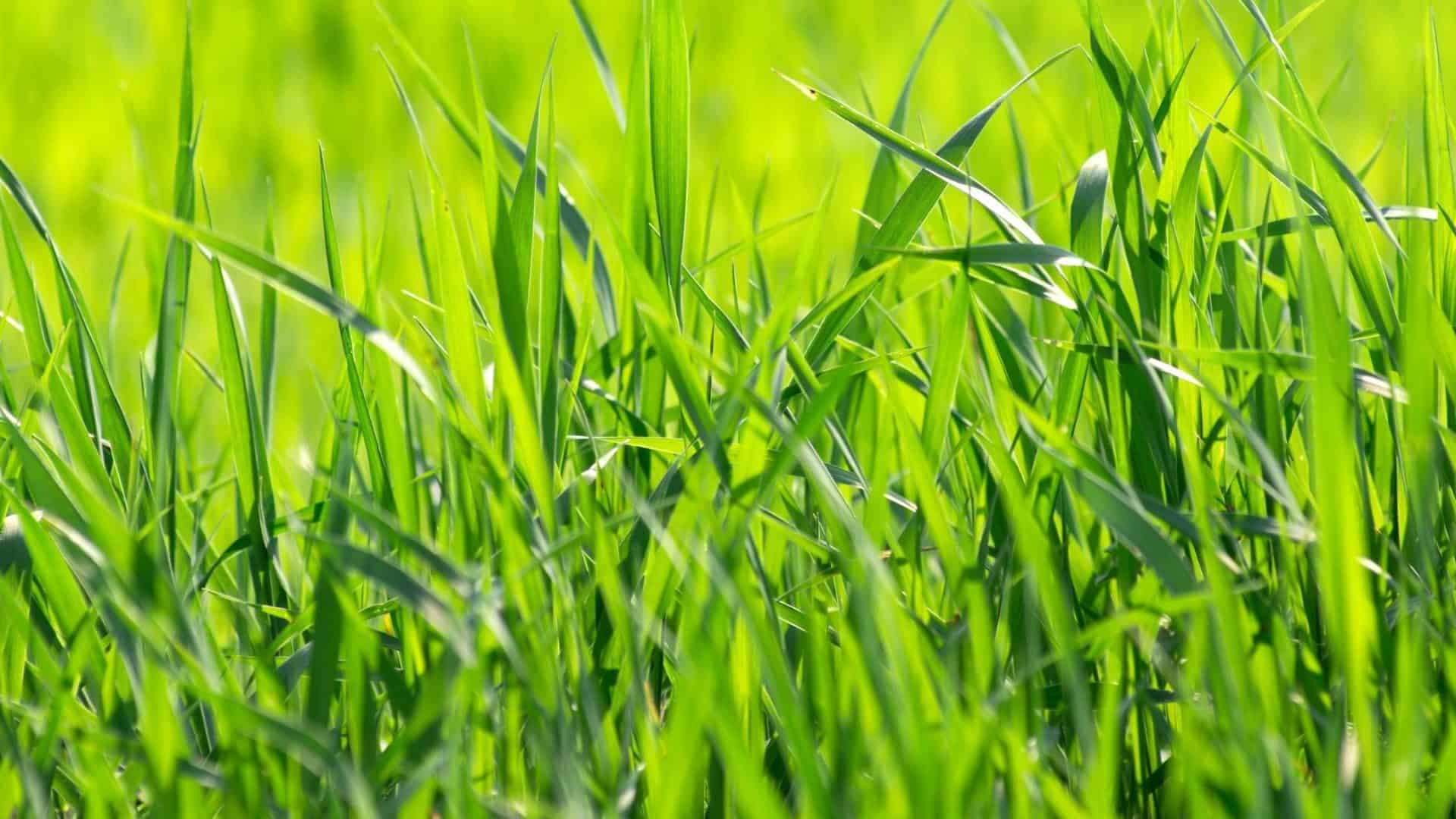Home>Gardening & Outdoor>Landscaping Ideas>How To Make Grass Dark Green


Landscaping Ideas
How To Make Grass Dark Green
Modified: August 17, 2024
Learn how to make your grass dark green with these effective landscaping ideas. Transform your lawn and enhance its beauty today!
(Many of the links in this article redirect to a specific reviewed product. Your purchase of these products through affiliate links helps to generate commission for Storables.com, at no extra cost. Learn more)
Introduction
Read more: Why Is My Grass Light Green And Dark Green
Introduction
Welcome to the world of landscaping, where the lush green carpet of a healthy lawn can transform a mere yard into a picturesque paradise. Achieving that deep, dark green hue that makes a lawn look truly luxurious is a goal for many homeowners and garden enthusiasts. In this comprehensive guide, we will explore the various strategies and techniques to help you achieve that coveted dark green grass.
A vibrant, dark green lawn not only enhances the aesthetic appeal of your outdoor space but also serves as a testament to the overall health of your grass. While achieving this rich color may seem like a daunting task, it is certainly attainable with the right knowledge and proper lawn care practices.
In the following sections, we will delve into the essential aspects of maintaining a healthy and verdant lawn. From understanding the factors that contribute to grass health to selecting the right fertilizer, implementing proper watering techniques, and dealing with common lawn issues such as pests and weeds, this guide will equip you with the knowledge and insights needed to make your lawn the envy of the neighborhood.
So, roll up your sleeves, grab your gardening tools, and get ready to embark on a journey toward achieving that deep, dark green grass you've always dreamed of. Let's dive in and uncover the secrets to cultivating a stunning, verdant lawn that will be the pride of your property.
Key Takeaways:
- Achieving dark green grass involves understanding soil quality, selecting the right fertilizer, and employing proper watering and mowing techniques. These factors contribute to a lush, vibrant lawn that enhances your outdoor space.
- Addressing pest and weed issues proactively, along with promoting overall grass health, is crucial for maintaining the rich, dark green color of your lawn. Embrace the journey of nurturing your grass to create a captivating oasis in your backyard.
Understanding Grass Health
Before diving into the specifics of achieving dark green grass, it’s crucial to understand the factors that contribute to the overall health of your lawn. Grass health is influenced by various elements, including soil quality, sunlight exposure, and proper maintenance practices.
First and foremost, soil quality plays a pivotal role in determining the vitality and color of your grass. Conducting a soil test can provide valuable insights into the pH levels, nutrient composition, and overall health of your lawn’s foundation. By addressing any deficiencies or imbalances in the soil, you can lay a solid groundwork for promoting vibrant green growth.
Additionally, sunlight exposure is a key consideration when aiming for dark green grass. Different grass species have varying sunlight requirements, and understanding the specific needs of your lawn’s grass type is essential. Ensuring adequate sunlight reaches the grass blades is fundamental to promoting lush, deep green growth.
Furthermore, regular maintenance practices, such as proper mowing height and aeration, contribute to the overall health of your grass. Mowing at the correct height prevents stress on the grass and encourages robust growth, while aeration facilitates the penetration of air, water, and nutrients into the soil, fostering a healthy root system.
By comprehensively understanding the interplay of soil quality, sunlight exposure, and maintenance practices, you can lay a solid foundation for achieving the coveted dark green hue of your lawn. In the subsequent sections, we will explore the actionable steps you can take to address these factors and elevate the overall health and appearance of your grass.
Choosing the Right Fertilizer
When it comes to nurturing dark green grass, selecting the appropriate fertilizer is a crucial decision that can significantly impact the overall health and vibrancy of your lawn. Fertilizers play a pivotal role in supplying essential nutrients to the soil, thereby enriching the grass and promoting lush, verdant growth.
Before delving into the selection process, it’s important to understand the primary nutrients that contribute to the rich green color of grass: nitrogen, phosphorus, and potassium. Nitrogen is particularly vital for promoting robust leaf and stem growth, which directly influences the lushness and deep green hue of the grass.
When choosing a fertilizer, opt for a high-quality, granular fertilizer with a balanced nutrient ratio, such as a 3-1-2 or 4-1-2 blend, which corresponds to the nitrogen-phosphorus-potassium ratio. These balanced formulations provide the grass with the necessary nutrients for sustained, healthy growth while promoting the development of a dark green color.
Furthermore, consider the application method and schedule when selecting a fertilizer. Slow-release fertilizers are advantageous as they provide a steady supply of nutrients to the grass over an extended period, promoting consistent growth and color development. Additionally, adhering to a regular fertilization schedule, typically in the spring and fall, ensures that the grass receives the essential nutrients it needs to maintain its vibrant green hue.
It’s also worth noting that organic fertilizers offer a natural and sustainable approach to promoting grass health and color. Derived from natural sources, such as compost, bone meal, or seaweed, organic fertilizers enrich the soil with a diverse array of nutrients, fostering a healthy and deeply green lawn while minimizing environmental impact.
By carefully selecting a high-quality fertilizer with a balanced nutrient ratio, opting for a suitable application method and schedule, and considering organic alternatives, you can effectively nourish your lawn and pave the way for achieving that sought-after dark green grass. In the subsequent sections, we will explore additional strategies, such as proper watering techniques and mowing practices, to further enhance the vibrancy and health of your lawn.
Proper Watering Techniques
Watering is a fundamental aspect of maintaining a healthy and vibrant lawn, and employing proper watering techniques is essential for nurturing dark green grass. Adequate moisture is crucial for sustaining the lushness and color of the grass, and understanding the optimal watering practices can significantly contribute to the overall health of your lawn.
One of the key principles of effective watering is to prioritize deep, infrequent watering over frequent, shallow watering. Deep watering encourages the development of strong, deep roots, which enhances the grass’s ability to access moisture and nutrients from the soil, ultimately promoting a rich, dark green color. Conversely, shallow watering can lead to weak, shallow roots and may result in a lackluster appearance.
Furthermore, it’s essential to water your lawn during the early morning hours, ideally before 10 a.m. This timing allows the grass to dry thoroughly during the day, minimizing the risk of fungal diseases while ensuring that the moisture penetrates deeply into the soil. Watering in the evening or at night can create prolonged periods of moisture on the grass, potentially leading to issues such as mold and mildew.
Utilizing a sprinkler system or soaker hoses can facilitate even water distribution across the lawn, ensuring that all areas receive adequate moisture. Additionally, incorporating a rain gauge can help you monitor the amount of water your lawn receives, allowing you to adjust your watering schedule based on the specific needs of your grass and the prevailing weather conditions.
When determining the frequency of watering, consider the concept of drought resistance. Allowing the grass to experience brief periods of drought stress before watering can prompt the development of a more resilient and deeply rooted lawn, contributing to its overall health and ability to maintain a rich green color, even during dry spells.
By implementing these proper watering techniques, you can provide your lawn with the essential moisture it needs to thrive, promoting the development of deeply green, healthy grass. In the subsequent sections, we will explore additional strategies, such as mowing and trimming tips, to further enhance the vibrancy and appearance of your lawn.
To make grass dark green, use a nitrogen-rich fertilizer and water deeply but infrequently. Mow at a higher setting to promote healthy growth.
Read more: How To Make The Grass Green
Mowing and Trimming Tips
Proper mowing and trimming practices are integral to cultivating dark green, lush grass that enhances the visual appeal of your lawn. By adhering to the following tips and techniques, you can promote healthy growth and maintain a vibrant green color that will elevate the overall aesthetics of your outdoor space.
- Optimal Mowing Height: Setting the mower at the appropriate height is crucial for promoting the lushness and dark green color of your grass. Aim to mow at a height that allows the grass to retain adequate leaf surface for photosynthesis while preventing stress on the plants. For cool-season grasses, a general guideline is to maintain a mowing height of around 2.5 to 3.5 inches, while warm-season grasses may require slightly lower mowing heights.
- Regular Mowing Schedule: Adhering to a consistent mowing schedule prevents the grass from becoming excessively long, which can hinder its ability to maintain a deep green color. Avoid removing more than one-third of the grass blade length in a single mowing session, as excessively cutting the grass can stress the plants and impede their ability to thrive.
- Sharp Mower Blades: Ensuring that the mower blades are sharp is essential for achieving clean, precise cuts that promote the health and appearance of the grass. Dull blades can tear the grass, leading to a frayed and discolored appearance, whereas sharp blades result in a neat, uniform cut that contributes to the overall lushness and dark green color of the lawn.
- Trimming and Edging: Paying attention to the details, such as trimming the edges of the lawn and defining its borders, enhances the overall manicured look of the grass. Neatly trimmed edges complement the deep green expanse of the lawn, creating a visually striking contrast and accentuating the vibrancy of the grass.
By implementing these mowing and trimming tips, you can effectively nurture dark green, healthy grass that serves as the centerpiece of your outdoor landscape. In the subsequent sections, we will explore strategies for addressing common lawn issues, such as pests and weeds, to further enhance the vitality and visual appeal of your lawn.
Dealing with Pests and Weeds
Protecting your lawn from pests and weeds is essential for maintaining its lush, dark green appearance. These common nuisances can detract from the overall health and visual appeal of the grass, making it crucial to implement effective strategies to address and prevent their presence.
Pest Control: Identifying and addressing pest infestations promptly is vital for safeguarding the health and color of your grass. Common lawn pests, such as grubs, chinch bugs, and armyworms, can cause significant damage to the grass if left unchecked. Utilizing targeted pest control products or enlisting the assistance of a professional lawn care service can help mitigate pest-related issues and preserve the vibrancy of your lawn.
Weed Management: Weeds not only disrupt the uniform appearance of the lawn but also compete with the grass for essential nutrients and moisture. Implementing proactive weed management practices, such as regular mowing at the appropriate height, applying pre-emergent herbicides, and manually removing weeds, can help prevent their proliferation and maintain the dark green expanse of your lawn.
Natural Predators: Encouraging the presence of natural predators, such as beneficial insects and birds, can aid in controlling pest populations and minimizing weed growth. For instance, ladybugs and lacewings are natural predators of aphids, while certain bird species feed on lawn-damaging insects, contributing to a balanced and pest-resistant lawn ecosystem.
Healthy Soil and Grass: Promoting the overall health of your lawn through proper watering, fertilization, and maintenance practices can bolster its resilience against pests and weeds. Healthy, vigorously growing grass is better equipped to withstand pest attacks and outcompete weeds, contributing to a consistently lush and dark green appearance.
By addressing pest and weed issues proactively and implementing comprehensive lawn care practices, you can preserve the health and vibrancy of your grass, ensuring that it maintains its rich, dark green color throughout the seasons. In the subsequent sections, we will summarize the key insights and strategies covered in this guide, empowering you to cultivate a stunning, verdant lawn that will be the envy of your neighborhood.
Conclusion
Cultivating and maintaining dark green grass is a rewarding endeavor that elevates the beauty and allure of your outdoor space. By integrating the comprehensive strategies and insights outlined in this guide, you can embark on a journey toward nurturing a lush, vibrant lawn that exudes health and vitality.
Understanding the fundamental elements of grass health, including soil quality, sunlight exposure, and maintenance practices, forms the cornerstone of promoting a rich, dark green color. By addressing these factors and implementing proper lawn care techniques, you can establish a robust foundation for the sustained vibrancy of your grass.
Selecting the right fertilizer, with a balanced nutrient ratio and suitable application method, provides essential nourishment to the grass, fostering healthy growth and contributing to its deep green hue. Additionally, employing proper watering techniques, mowing at the optimal height, and addressing pest and weed issues proactively are integral components of maintaining a stunning, verdant lawn.
As you embark on this journey, remember that the health and appearance of your lawn are a reflection of your dedication and care. Embrace the process of nurturing your grass, and revel in the transformation as it flourishes into a captivating expanse of dark green beauty.
With these insights and strategies at your disposal, you are equipped to embark on a fulfilling and rewarding lawn care journey, culminating in the realization of your vision for a deeply green, luxuriant oasis right in your own backyard. So, roll up your sleeves, immerse yourself in the joys of gardening, and witness your lawn thrive and radiate with a captivating, dark green allure that will undoubtedly leave a lasting impression.
Frequently Asked Questions about How To Make Grass Dark Green
Was this page helpful?
At Storables.com, we guarantee accurate and reliable information. Our content, validated by Expert Board Contributors, is crafted following stringent Editorial Policies. We're committed to providing you with well-researched, expert-backed insights for all your informational needs.















0 thoughts on “How To Make Grass Dark Green”